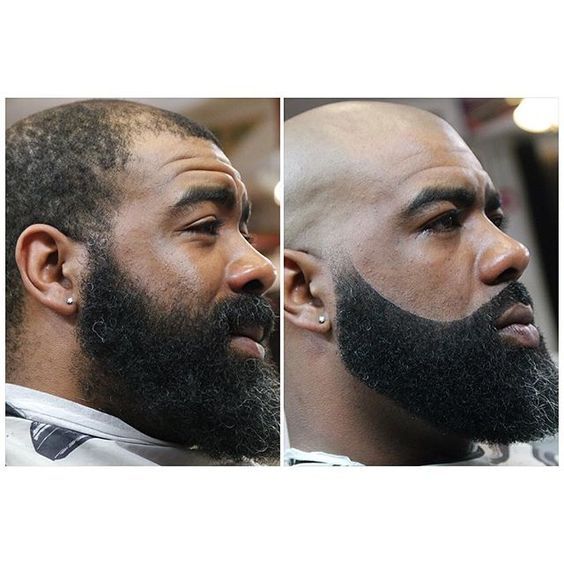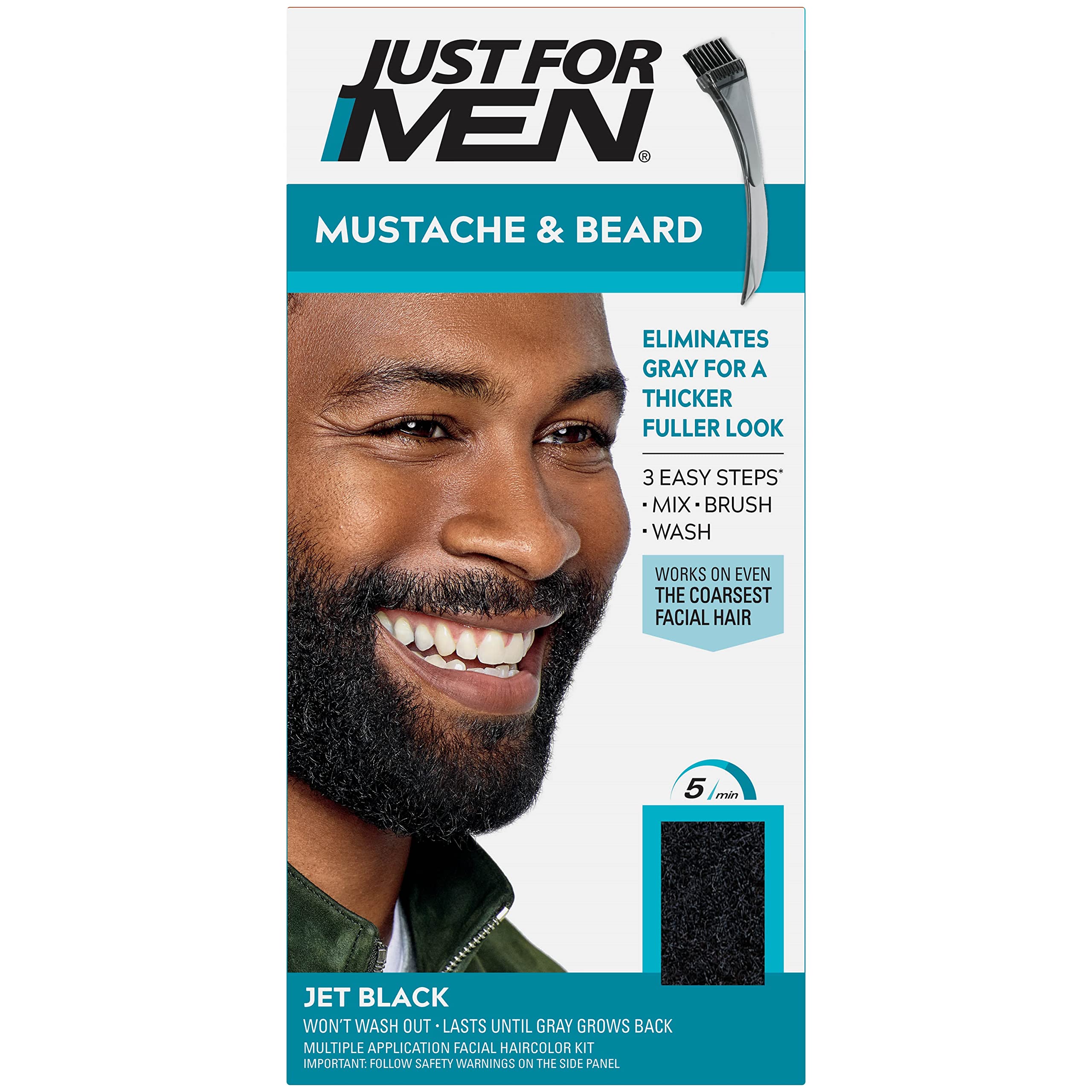Have you ever wondered if it’s possible to dye your beard? Well, you’ve come to the right place! At BeardsDude.com, we’re here to answer all your burning questions about beard care and grooming. Dyeing a beard is indeed possible, and in our article, we’ll dive into the details of how it can be done effectively and safely.
In the article, we’ll explore the different methods and products available for dyeing your beard. Whether you want to cover up those pesky gray hairs or try out a bold new color, we’ve got you covered. We’ll discuss the benefits and potential risks of dyeing your beard and provide tips on how to achieve the best results.
But that’s not all! We’ll also touch on the importance of maintaining your dyed beard and provide guidance on how to keep it looking fresh and vibrant. From proper washing and conditioning techniques to using beard-specific shampoos and conditioners, we’ll share all the essential tips and tricks to ensure your dyed beard stays healthy and vibrant.
So, if you’ve been contemplating dyeing your beard or simply want to learn more about the process, stay tuned for our comprehensive guide. We’re here to help you navigate the world of beard dyeing and make sure you have all the information you need to make the best choices for your beard. At BeardsDude.com, we’re all about empowering you to rock your beard with confidence! Dyeing a beard is a popular trend among men who want to change their look or cover up gray hairs. With advances in hair dye technology, it is indeed possible to dye a beard, transforming its color to match your desired shade. In this article, we will explore the different methods of dyeing a beard, provide tips for choosing the right beard dye, discuss the process of preparing and applying the dye, and offer advice on maintaining and caring for a dyed beard.

Different Methods of Dyeing a Beard
Temporary Beard Dye
Temporary beard dye is the least permanent option and is ideal for those who want to experiment with different colors without long-term commitment. Temporary dyes usually come in the form of sprays, gels, or mascaras and can be easily applied and washed off with regular shampooing. It’s important to note that temporary dyes may not provide complete coverage for gray hairs and may require more frequent touch-ups.
Semi-Permanent Beard Dye
Semi-permanent beard dye is a middle ground between temporary and permanent dyes. This type of dye typically lasts for several weeks and gradually fades with each wash. Semi-permanent dyes are available in various shades and provide better coverage for gray hairs. They are also less damaging to the hair as they do not contain harsh chemicals like ammonia or peroxide.
Permanent Beard Dye
Permanent beard dye offers long-lasting results but requires more commitment and maintenance. This type of dye typically contains ammonia and/or peroxide, which helps to penetrate the hair shaft and provide a more intense and lasting color. Permanent dyes are best suited for those who want a permanent change in color or have a significant amount of gray hairs. However, they may cause more damage to the hair and require touch-ups as the roots grow out.
Choosing the Right Beard Dye
When choosing a beard dye, there are several factors to consider to ensure the best results.
Consider Your Natural Hair Color
To achieve a natural-looking result, it’s important to choose a beard dye that is close to your natural hair color. Matching the dye to your existing hair color will help it blend seamlessly with your beard, creating a more natural appearance.
Selecting a Shade
If you’re looking to change your beard color entirely, consider selecting a shade that complements your skin tone and personal style. It’s recommended to choose a shade that is not too far from your natural hair color to avoid a drastic or unnatural look.
Testing the Dye on a Small Area
Before applying the dye to your entire beard, it’s always advisable to perform a patch test on a small area of your skin to check for any allergic reactions or sensitivities. This step is particularly important if you have sensitive skin or a history of allergies. Apply a small amount of dye to the inside of your wrist or elbow and leave it on for 24 hours. If no adverse reactions occur, you can proceed to dye your entire beard.
Preparing Your Beard for Dyeing
Properly preparing your beard before dyeing will help ensure even application and longer-lasting results.
Cleaning Your Beard
Thoroughly clean your beard with a gentle shampoo and warm water to remove any dirt, oils, or styling products. Avoid using harsh soaps or shampoos that may strip away natural oils and leave your beard feeling dry and brittle. Pat your beard dry with a towel, leaving it slightly damp for easier application of the dye.
Trimming and Shaping the Beard
If necessary, trim and shape your beard before applying the dye. This will help remove any split ends or dry hair, resulting in a healthier-looking beard. Additionally, shaping your beard to your desired style beforehand will make it easier to apply the dye evenly.
Protecting the Skin
To prevent staining or irritation on the skin surrounding your beard, it’s important to apply a thin layer of petroleum jelly or a similar barrier cream. Apply it along the neckline, cheeks, and any other areas where the dye may come into contact with your skin. This will create a protective barrier and make cleanup easier.
Applying the Beard Dye
Once your beard is prepared, it’s time to apply the dye. Follow these steps for the best results.
Following the Instructions
Read the instructions provided with the beard dye carefully and follow them precisely. Each dye may have specific instructions for mixing, application, and waiting times. Not following the instructions may result in uneven color or less-than-desired results.
Using Gloves
Wear gloves to protect your hands from staining and to ensure even application. Most beard dyes come with gloves included in the packaging. If not, you can purchase disposable gloves from a local drugstore or online.
Applying the Dye Evenly
Using a beard brush or a dye brush, apply the dye in the direction of hair growth, starting from the roots and working towards the ends. Ensure that the dye is evenly distributed throughout your beard, focusing on areas with more gray hairs. Take your time and pay attention to detail to achieve a uniform and natural-looking color.

Waiting and Rinsing
After applying the dye, it’s important to follow the recommended waiting time and rinse it off properly.
Waiting Time
Beard dye instructions usually specify a waiting time, typically ranging from 5 to 30 minutes. This waiting time allows the dye to develop and penetrate the hair fibers. It’s essential to strictly adhere to the waiting time mentioned in the instructions to achieve the desired color intensity.
Rinsing Off the Dye
Once the waiting time is up, rinse your beard thoroughly with lukewarm water until the water runs clear. Avoid using hot water, as it can strip away the dye and cause damage to the hair. Gently pat your beard dry with a towel, being careful not to rub or tug on the hair.
Using Conditioner
After rinsing off the dye, it’s recommended to apply a conditioner specifically formulated for color-treated hair. This will help nourish and moisturize your beard, keeping it soft and preventing dryness or brittleness.
Taking Care of a Dyed Beard
Caring for a dyed beard is crucial to maintain its color and overall health. Follow these tips to ensure your dyed beard continues to look its best.
Using Color-Safe Beard Products
Regularly wash and condition your dyed beard with products specifically designed for color-treated hair. These products are formulated to be gentle on the hair and will help preserve the color and prevent fading. Avoid using harsh shampoos, conditioners, or styling products that contain sulfates, as they can strip away the dye and cause color to fade.
Avoiding Hot Water
When washing your dyed beard, avoid using hot water. Hot water can strip away the dye and cause the color to fade faster. Instead, use lukewarm or cool water to rinse off any dirt or excess product from your beard.
Moisturizing and Conditioning
Dyed hair, including a dyed beard, tends to be more prone to dryness and brittleness. To keep your beard hydrated and healthy, apply a beard oil or balm daily. These products help seal in moisture, prevent frizz, and promote overall beard health.

Maintaining the Dyed Beard
To ensure that your dyed beard continues to look its best, a few maintenance steps are necessary.
Touching Up the Roots
As your beard grows, the natural color of your hair will start to show at the roots. To maintain a consistent color, it’s important to touch up the roots regularly. This involves reapplying the dye only to the areas where the natural hair color is showing, following the same steps as when initially dyeing the beard.
Avoiding Color-Fading Factors
Certain factors can cause the color of a dyed beard to fade faster than usual. Avoid exposure to direct sunlight for prolonged periods, as the sun’s UV rays can cause the dye to break down and fade. Additionally, excessive heat from styling tools like hairdryers, straighteners, or curling irons can also cause the color to fade faster. Whenever possible, allow your beard to air dry and limit the use of heated styling tools.
Regular Trimming
Regularly trimming your beard will help maintain its shape and overall appearance. Trimming removes split ends and prevents the beard from looking unruly or unkempt. It’s recommended to visit a professional barber every few weeks for a trim to ensure clean lines and even growth.
Common Mistakes to Avoid
When dyeing a beard, it’s important to avoid common mistakes that can result in less-than-desirable outcomes.
Not Following Instructions
One of the most common mistakes is not following the instructions provided with the beard dye. Each dye may have specific waiting times, application techniques, and aftercare instructions. Ignoring or deviating from these instructions can lead to color inconsistencies, patchy results, or damage to the hair.
Overdyeing the Beard
Applying too much dye or leaving the dye on for longer than recommended can result in an overly intense or unnatural color. It’s important to follow the waiting time mentioned in the instructions and start with a conservative approach. You can always reapply the dye for a longer duration or increase the color intensity in subsequent applications.
Using Low-Quality Products
Using low-quality or cheap beard dyes can lead to unsatisfactory results and potential damage to the hair. It’s important to invest in high-quality beard dyes from reputable brands to ensure a better outcome. Cheaper dyes may contain harsh chemicals that can strip away moisture from the hair and cause dryness or brittleness.

Consulting a Professional
While dyeing your beard at home is a viable option for many, there are benefits to consulting a professional for your dyeing needs.
Benefits of Professional Help
Professional beard stylists have expertise in color matching, application techniques, and overall beard grooming. They can provide valuable advice on selecting the right shade and achieving your desired look. Professionals also have access to a wider range of high-quality products and tools that may not be readily available for home use.
Finding a Skilled Beard Stylist
If you choose to seek professional help, it’s important to find a skilled beard stylist who has experience in dyeing beards. Ask for recommendations from friends, read online reviews, or visit local barbershops to find a stylist who specializes in beard grooming. Consult with the stylist prior to scheduling an appointment to ensure they understand your desired color and style.
Understanding the Costs
Professional beard dyeing services vary in cost depending on factors such as location, experience level, and additional services provided. It’s important to discuss pricing with the stylist beforehand to ensure it fits within your budget.
Considering Natural Alternatives
If you prefer a natural approach or want to avoid the use of chemical dyes, there are several natural alternatives available.
Henna for Beard Dyeing
Henna is a plant-based dye that has been used for centuries to color hair naturally. Applying henna to your beard can result in a reddish-brown color. It’s important to note that henna may not provide the same intensity or range of colors as chemical dyes, and the results may vary depending on your natural hair color.
Coffee or Tea Dyeing
Coffee and tea can be used as natural dyes for the beard, particularly for those with lighter hair colors. Brew a strong cup of coffee or tea, allow it to cool, and then apply it to your beard using a dye brush or a spray bottle. Wrap your beard in plastic wrap and let it sit for 30 minutes to an hour before rinsing. This method may require multiple applications to achieve a noticeable change in color.
Beard Oils with Tinting Properties
Certain beard oils on the market contain natural ingredients that have tinting properties. These oils can slightly darken your beard hair and provide a subtle change in color. While these oils may not provide dramatic results, they can be a good option for individuals looking for a low-commitment and natural approach to beard dyeing.

Safety Precautions
Before dyeing your beard, it’s important to take some safety precautions to avoid adverse reactions or sensitivities.
Performing a Patch Test
Perform a patch test by applying a small amount of dye to a small area of skin, such as the inside of your wrist or elbow. Leave it on for 24 hours and monitor for any allergic reactions or sensitivities. If you experience redness, itching, or irritation, it’s advisable to avoid using the dye and consult a healthcare professional if necessary.
Avoiding Allergens and Sensitivities
Beard dyes, especially those containing chemicals, can cause allergic reactions or sensitivities in some individuals. If you have a known allergy to hair dyes or have sensitive skin, it’s important to choose a dye that is specifically labeled as hypoallergenic or suitable for sensitive skin. Always read the ingredients list and avoid dyes that contain known allergens or irritants.
Being Cautious with Chemical Dyes
Chemical dyes, particularly permanent dyes, can be harsh on the hair and potentially damaging if not used correctly. Follow the instructions provided with the dye carefully, and if you have any concerns or doubts, it’s advisable to consult a professional. If you experience any adverse effects such as severe itching, burning, or hair breakage after dyeing, seek medical advice.
Pros and Cons of Dyeing a Beard
Before deciding to dye your beard, it’s important to consider the pros and cons associated with the process.
Advantages of Dyeing a Beard
- Dyeing a beard can provide a new look and help boost self-confidence.
- It can cover up gray hairs and make the beard appear fuller and more vibrant.
- Dyeing can allow for creative expression and experimentation with different colors and styles.
- The process is relatively quick and easy to do at home, saving time and money compared to visiting a professional.
Disadvantages of Dyeing a Beard
- Dyeing a beard requires regular maintenance and touch-ups to maintain the desired color and appearance.
- Chemical dyes can potentially damage the hair if not used correctly or if the dye is left on for too long.
- Allergic reactions or sensitivities to the dye can occur, particularly if proper patch testing is not performed.
- Some individuals may find the process time-consuming or prefer a more natural approach to hair dyeing.
Frequently Asked Questions
Will Dyeing My Beard Damage the Hair?
Dyeing a beard, particularly with chemical dyes, can potentially cause damage to the hair if not performed correctly or if the dye is left on for too long. It’s important to follow the instructions provided with the dye and avoid leaving it on for longer than recommended. Additionally, proper maintenance and care, such as using color-safe products and avoiding excessive heat, can help minimize damage.
How Long Does Beard Dye Last?
The longevity of beard dye varies depending on several factors, including the type of dye used, the specific product, the natural hair color, and the care taken after dyeing. Temporary dyes typically wash out with regular shampooing, while semi-permanent dyes can last for several weeks before gradually fading. Permanent dyes can last for several months but may require touch-ups as the roots grow out.
Can I Dye a Grey Beard?
Yes, it is possible to dye a gray beard if you want to change or enhance its color. Both semi-permanent and permanent dyes can effectively cover gray hairs and provide a more youthful and vibrant appearance. The choice of dye depends on personal preference and the desired duration of the color change.
Conclusion
In conclusion, dyeing a beard is indeed possible and can be a fun and transformative experience. With different methods and options available, it’s important to choose the right beard dye, follow the instructions carefully, and take proper care of your dyed beard to achieve the best results. Whether you opt for a temporary change, a semi-permanent transformation, or a permanent color alteration, dyeing a beard can help you achieve the desired look and enhance your personal style. Remember to consider the pros and cons, perform patch tests, and consult a professional if needed. Now that you have all the information, go ahead and explore the exciting world of beard dyeing with confidence!
